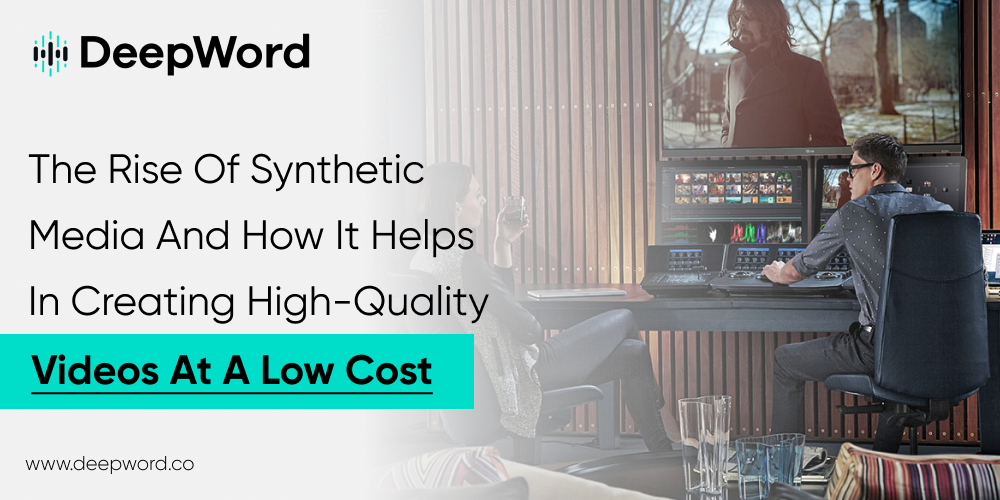Computer systems are becoming highly proficient at mimicking realities. Advanced films, for instance, depend significantly on machine-generated sets, landscapes, & figures or characters in replacement of the realistic settings and decorations that have been historically prevalent and are now of no use. Well, such created sequences and pictures are frequently indistinguishable from the true thing. All this is possible with the help of synthetic media, also known as Deep Fakes.
Deep Fakes employ machine learning AI algorithms to replicate the appearance of one individual in video or other digital content with that of someone.
What is a deep fake?
The name “deepfake ” is derived from its foundational concept “deep learning”. This is a type of artificial intelligence. Deep learning can also be called learning through artificial neural networks. This concept utilizes massive amounts of data to train itself (machine) on how to solve issues. This technology can also be used to alter faces/ voices/ backgrounds and a lot more in video and to create realistic-looking synthetic multimedia content.
How is it all done?
There are various techniques for making deep fakes, but perhaps the most prevalent uses deep learning models with auto-encoders and a swapping methodology. You’ll need a targeting video to serve as the foundation for the deep fake, followed by a series of videos of the individual you wish to incorporate into the target.
The auto-encoder is a deep neural AI algorithm that studies the visual content to determine how the individual appears from various perspectives and environmental situations and then maps that individual onto the human in the targeted video by discovering comparable traits. Another form of machine learning, known as Generative Adversarial Networks (GANs), is brought into play, which finds and fixes any errors in the deep fake across numerous rounds, making it more difficult for deep fake catchers to decode it.

image source- TowrdsdatascienceI
Creating high-quality videos at a low cost
Deep learning employs inventive adversarial networks to augment autonomous decision-making. Deep learning algorithms allow video-makers to easily improve videos and revenue by using AI in a range of special effects. If you would like to save time, labor, and dollars while also gaining access to more advanced video editing skills, you can utilize AI to edit video. This technology will help to avoid complications and make the operation easier.
Deep fakes aren’t simply for videos. Deepfake acoustics and sounds is a rapidly expanding field with several uses.
Realistic voice deep fakes can now be created using deep learning models in as little as a few minutes. All you need is the audio of the individual whose speech is to be sequenced. Once a prototype of a voice is created, that individual can be made to speak anything.
Creating AI content is less affordable and simple to scale. This new trend, however, poses significant ethical concerns. They all allude to one core issue: how to distinguish AI-generated information from actual stuff? In answer to this query, and to prevent the propagation of false information, the tech community and lawmakers create legislative guidelines for media corporations and digital content creators from all segments, so that the public can receive original, simple-to-understand, personalized media by the use of this technology.
The technique has proven useful in altering stock images, creating models to display new outfits, e-learning tutorials, Hollywood blockbusters, and other niches as well.
Many organizations require the flexibility to distribute specialized content throughout many nations to reach a wide range of clients and markets. AI voice dub & simulations will enable creative media businesses to produce a unified video in several languages without sacrificing quality. We’re already seeing this in reality, with companies like Deepword using AI to dub content in many languages while retaining their genuine accents.
The future
Synthetic Media is the Future. Everyone’s access to media creation and innovation will be democratized. AI / Deep Learning is very much an underlying technology.
Technology has continually reduced the cost of producing high-quality content. What was once a million-dollar chopper aerial shoot could now be produced for less than $1,000 using a GoPro and a drone. Apple’s filmmaking software, which costs $299, has been utilized to produce Oscar Award-winning films. Producing media content is becoming increasingly accessible.
However, there is always a primary individual effort for a Vlogger or TikTok creator to produce videos. But now anyone could create material with a complete crew of people thanks to synthetic media.
Well if you are an organization that wants to share media content. We would recommend you to consider choosing virtual actors, personalizing them, and incorporating them into your work with deepword.
What are you waiting for? Let’s get started…!


